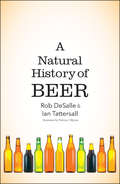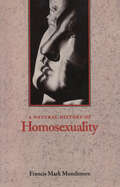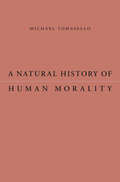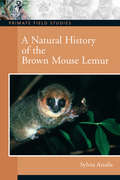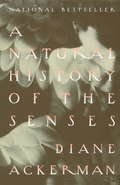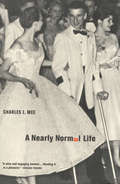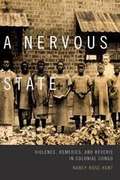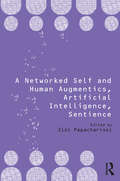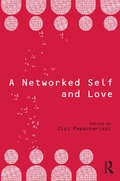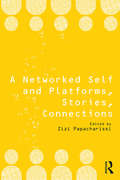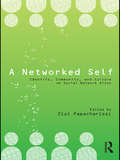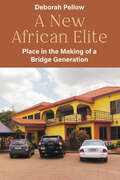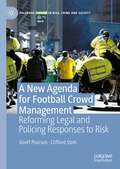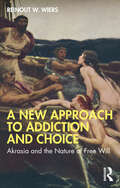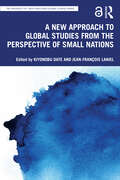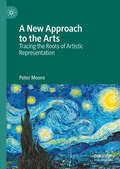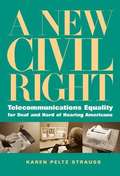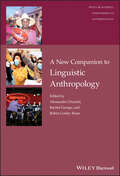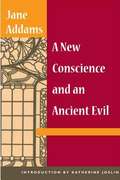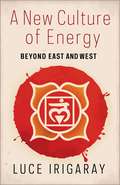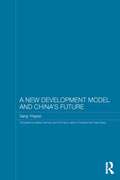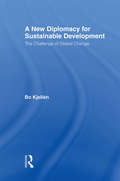- Table View
- List View
A Natural History of Beer
by Ian Tattersall Rob DeSalleA celebration of beer—its science, its history, and its impact on human culture What can beer teach us about biology, history, and the natural world? From ancient Mesopotamian fermentation practices to the resurgent American craft brewery, Rob DeSalle and Ian Tattersall peruse the historical record and traverse the globe for engaging and often surprising stories about beer. They explain how we came to drink beer, what ingredients combine to give beers their distinctive flavors, how beer’s chemistry works at the molecular level, and how various societies have regulated the production and consumption of beer. Drawing from such diverse subject areas as animal behavior, ecology, history, archaeology, chemistry, sociology, law, genetics, physiology, neurobiology, and more, DeSalle and Tattersall entertain and inform with their engaging stories of beer throughout human history and the science behind it all. Readers are invited to grab a beer and explore the fascinating history of its creation.
A Natural History of Homosexuality
by Francis Mark MondimoreSelected by Choice Magazine as an Outstanding Academic TitleA terrible sin, a gift from the gods, a mental illness, a natural human variation—over the centuries people have defined homosexuality in all of these ways. Since the word homosexual was coined in 1869, many scientists in a variety of fields have sought to understand same-sex intimacy. Drawing on recent insights in biology and genetics, psychiatrist Francis Mondimore set out to explore the complex landscape of sexual orientation.The result is A Natural History of Homosexuality, a generous work that synthesizes research in biology, history, psychology, and politics to explain how homosexuality has been understood and defined from ancient times until the present. Mondimore narrates tales of love and courage as well as discrimination and bigotry in settings as diverse as ancient Greece and Victorian England, early America and fin de siecle Vienna. He also tells fascinating stories about societies which accepted, incorporated, or institutionalized homosexuality into mainstream culture, stories illustrating that same-sex eroticism was often accepted as a normal aspect of human sexuality. In twentieth-century America, researchers first recognized that homosexuality might not be "pathological" when Alfred Kinsey and Evelyn Hooker conducted the first studies of sexuality not biased by preconceived notions of "normal" sexual behavior. After exploring sexual development in the human fetus, Mondimore reviews current biological research into the nature of sexual orientation and examines recent scientific findings on the role of heredity and hormones, as well as Simon LeVay's 1991 brain studies. He then turns to a very important focus: on people and their individual experiences. He explores "what happens between childhood and adulthood in an individual that makes him or her come to identify himself or herself as having a sexual orientation." He also explains our current understanding of bisexuality and the transgender phenomena of transsexualism and transvestism. Finally, Mondimore analyzes the circumstances of such prominent scandals as the anti-homosexual trials of Oscar Wilde and Philip von Eulenberg, and recounts the Nazi persecution of homosexuals during the Holocaust. This far-reaching discussion includes a description of the ex-gay ministries and reparative therapy as well as the Stonewall riots and AIDS, ending with the emergence of gay pride and community.
A Natural History of Human Morality
by Michael TomaselloMichael Tomasello offers the most detailed account to date of the evolution of human moral psychology. Based on experimental data comparing great apes and human children, he reconstructs two key evolutionary steps whereby early humans gradually became an ultra-cooperative and, eventually, a moral species capable of acting as a plural agent "we".
A Natural History of the Brown Mouse Lemur
by Sylvia AtsalisThis text can be used for any undergraduate or graduate course with a primate behavior or primate ecology component. It can also be used as supplemental reading, for any advanced animal behavior class. There are very few books that address the biology of nocturnal primates. There are even fewer that delve with any detail regarding the behavior of specific species. These animals are difficult to follow. Their diminutive size, the thickness of the vegetation, and their nocturnal habits, make the study of their habits a demanding task.Through a trial of patience, Sylvia Atsalis has undertaken this task. Here she provides an in depth view at the life and behavioral patterns of these tiny primates. A Natural History of the Brown Mouse Lemur provides the most complete look at the behavior and ecology of mouse lemurs.
A Natural History of the Senses (Argumentos Ser.)
by Diane AckermanDiane Ackerman's lusciously written grand tour of the realm of the senses includes conversations with an iceberg in Antarctica and a professional nose in New York, along with dissertations on kisses and tattoos, sadistic cuisine and the music played by the planet Earth. "Delightful ... gives the reader the richest possible feeling of the worlds the senses take in."--The New York Times.
A Nearly Normal Life: A Memoir
by Charles L. MeeIn the summer of 1953 the author was a carefree, athletic boy of fourteen. But after he collapsed during a school dance one night, he was suddenly bedridden, drifting in & out of consciousness, as his body disintegrated into a shadow of its former self. He had been stricken with spinal polio. When he emerged from the grip of the disease, he was confronted with a life change so enormous that it challenged all he had believed in & forced him, despite his young age, to redefine himself. His once stereotypically normal life, filled with baseball & swimming pools & dreams of girls, had been irreversibly altered. He was almost the same person he had been; he was nearly normal. His moving personal narrative is a textured portrait of life in the fifties - a time when America & her fighting spirit collided with this disease. Both funny & profound, he is a gifted, unique writer, who unravels the mysteries of youth in a Cold War climate, who gives voice to the mind of a child with a potentially fatal disease, & whose recognition of himself as a disabled outsider heightens his brilliant talents as a storyteller.
A Necessary Spectacle: Billie Jean King, Bobby Riggs, and the Tennis Match That Leveled the Game
by Selena RobertsBillie Jean King didn't want to play Bobby Riggs. He baited and begged her for months while she ignored his catcalls and challenges.
A Nervous State: Violence, Remedies, and Reverie in Colonial Congo
by Nancy Rose HuntIn A Nervous State, Nancy Rose Hunt considers the afterlives of violence and harm in King Leopold's Congo Free State. Discarding catastrophe as narrative form, she instead brings alive a history of colonial nervousness. This mood suffused medical investigations, security operations, and vernacular healing movements. With a heuristic of two colonial states--one "nervous," one biopolitical--the analysis alternates between medical research into birthrates, gonorrhea, and childlessness and the securitization of subaltern "therapeutic insurgencies." By the time of Belgian Congo's famed postwar developmentalist schemes, a shining infertility clinic stood near a bleak penal colony, both sited where a notorious Leopoldian rubber company once enabled rape and mutilation. Hunt's history bursts with layers of perceptibility and song, conveying everyday surfaces and daydreams of subalterns and colonials alike. Congolese endured and evaded forced labor and medical and security screening. Quick-witted, they stirred unease through healing, wonder, memory, and dance. This capacious medical history sheds light on Congolese sexual and musical economies, on practices of distraction, urbanity, and hedonism. Drawing on theoretical concepts from Georges Canguilhem, Georges Balandier, and Gaston Bachelard, Hunt provides a bold new framework for teasing out the complexities of colonial history.
A Networked Self and Birth, Life, Death (A Networked Self)
by Zizi PapacharissiWe are born, live, and die with technologies. This book is about the role technology plays in sustaining narratives of living, dying, and coming to be. Contributing authors examine how technologies connect, disrupt, or help us reorganize ways of parenting and nurturing life. They further consider how technology sustains our ways of thinking and being, hopefully reconciling the distance between who we are and who we aspire to be. Finally, they address the role technology plays in helping us come to terms with death, looking at technologically enhanced memorials, online rituals of mourning, and patterns of grief enabled through technology. Ultimately, this volume is about using technology to reimagine the art of life.
A Networked Self and Human Augmentics, Artificial Intelligence, Sentience (A Networked Self)
by Zizi PapacharissiEvery new technology invites its own sets of hopes and fears, and raises as many questions as it answers revolving around the same theme: Will technology fundamentally alter the essence of what it means to be human? This volume draws inspiration from the work of the many luminaries who approach augmented, alternative forms of intelligence and consciousness. Scholars contribute their thoughts on how human augmentic technologies and artificial or sentient forms of intelligence can be used to enable, reimagine, and reorganize how we understand our selves, how we conceive the meaning of "human", and how we define meaning in our lives.
A Networked Self and Love (A Networked Self)
by Zizi PapacharissiWe fall in love every day, with others, with ideas, with ourselves. Stories of love excite us and baffle us. This volume is about love and the networked self. It focuses on how love forms, grows, or dissolves. Chapters address how relationships of love develop, are sustained or broken up through technologies of expression and connection. Authors explore how technologies reproduce, reorganize, or reimagine our dominant rituals of love. Contributors also address what our experiences with love teach us about ourselves, others, and the art of living. Every love story has a beginning and an end. Technology does not give love the kiss of eternity; but it can afford love new meaning.
A Networked Self and Platforms, Stories, Connections (A Networked Self)
by Zizi PapacharissiWe tell stories about who we are. Through telling these stories, we connect with others and affirm our own sense of self. Spaces, be they online or offline; private or public; physical, augmented or virtual; or of a hybrid nature, present the performative realms upon which our stories unfold. This volume focuses on how digital platforms support, enhance, or confine the networked self. Contributors examine a range of issues relating to storytelling, platforms, and the self, including the live-reporting of events, the curation of information, emerging modalities of journalism, collaboratively formed memories, and the instant historification of the present.
A Networked Self: Identity, Community, and Culture on Social Network Sites (A Networked Self)
by Zizi PapacharissiA Networked Self examines self presentation and social connection in the digital age. This collection brings together new work on online social networks by leading scholars from a variety of disciplines. The focus of the volume rests on the construction of the self, and what happens to self-identity when it is presented through networks of social connections in new media environments. The volume is structured around the core themes of identity, community, and culture - the central themes of social network sites. Contributors address theory, research, and practical implications of many aspects of online social networks including self-presentation, behavioral norms, patterns and routines, social impact, privacy, class/gender/race divides, taste cultures online, uses of social networking sites within organizations, activism, civic engagement and political impact.
A New African Elite: Place in the Making of a Bridge Generation
by Deborah PellowFocusing on a sub-set of the Dagomba of northern Ghana, this book looks at the first generation to go through secondary school in the north. After university and post-graduate education, they relocate to Accra, the capital, hundreds of miles south. They crossed social and physical space and have become cosmopolitan while holding on to tradition and attachment to their home town. This bridge generation are patrons to those living up north. This book charts their path into elite status and argues that they use the tools gained through education and social connections to influence politics back home.
A New Agenda For Football Crowd Management: Reforming Legal and Policing Responses to Risk (Palgrave Studies in Risk, Crime and Society)
by Geoff Pearson Clifford StottThis book provides a holistic and interdisciplinary focus on the legal regulation and policing of football violence and disorder in Britain. Anchored in ground-breaking ethnographic and participant-action research, the book combines a crowd psychology and socio-legal approach to critically explore the contemporary challenges of managing football crowds. It sets out the processes by which football disorder occurs and the limitations of existing approaches to policing ‘football hooliganism’, in particular the dominant focus on controlling ‘risk supporters’, before setting out proposals for fundamental reforms to both law and policing. This book will be of value to academics, students, legal and policing practitioners, as well as policy-makers. The two authors are internationally known experts in the management and behaviour of football crowds and bring together for the first time over 30 years of research in this area from the disciplines of law and social psychology.
A New Anthropology of Islam
by John R. BowenIn this powerful, but accessible new study, John Bowen draws on a full range of work in social anthropology to present Islam in ways that emphasise its constitutive practices, from praying and learning to judging and political organising. Starting at the heart of Islam - revelation and learning in Arabic lands - Bowen shows how Muslims have adapted Islamic texts and traditions to ideas and conditions in the societies in which they live. Returning to key case studies in Asia, Africa and Western Europe, to explore each major domain of Islamic religious and social life, Bowen also considers the theoretical advances in social anthropology that have come out of the study of Islam. A New Anthropology of Islam is essential reading for all those interested in the study of Islam and for those following new developments in the discipline of anthropology.
A New Approach to Addiction and Choice: Akrasia and the Nature of Free Will
by Reinout W. WiersThis engaging book provides a novel examination of the nature of addiction, suggesting that by exploring akrasia—the tendency to act against one’s better judgement—we can better understand our addictive behaviors. It offers an alternative to the dominant biomedical model of addiction as a chronic brain disease by looking at the nature of how we make decisions and proposing the idea that biased choice is central to addiction.The book looks at both classic substance use disorders and newer “addictions” to smartphones, meat and fossil fuels. It discusses current perspectives on free will in philosophy, psychology and neuroscience, and the questions surrounding free will versus determinism, including our ability to steer our behaviors guided by the promise of future outcomes. Different perspectives on addiction and choice are presented in an eloquent style, and illustrated by personal stories. Through a lively discussion of the key scientific and philosophical issues surrounding addiction, this book is valuable for students in psychology, criminology, sociology and social work, as well as health care professionals and general readers interested in the nature of our free will.
A New Approach to Global Studies from the Perspective of Small Nations (The University of Tokyo-Routledge Global Studies Series)
by Kiyonobu Date Jean-François LanielWith emphasis on East Asian and North American examples – notably Japan and Quebec – Date, Laniel and their contributors take a new approach to the understanding of small nations and their role in the international system. Small nations, by their very nature, raise significant questions about what a nation is. Some small nations are sovereign states with relatively small populations and limited territory, others are nations within larger sovereign states, with distinctive cultures, governance structures or other features that differentiate them from their “parent” state. By focussing on non-European nations in particular, the contributors to this volume challenge our conceptions of what a small nation is and how it operates within the international system. They focus in particular on the nation-within-a-nation-state of Quebec and on Japan, supplemented by further examples from East Asia. By interrogating what these examples have to show us about the typology and character of small nations, they offer a critique of superpower and draw out the potential of small nation studies. A valuable resource for students and scholars of international relations and theories of the nation and nation state.
A New Approach to the Arts: Tracing the Roots of Artistic Representation
by Peter MooreThis book considers how art actually works, how the various art forms connect with the world of ordinary human experience. Many books approach the subject from the top down, through topics such as the nature of beauty, the meaning of art, aesthetic judgement, and so on. The present book examines the subject from the ground up, so to speak, showing how the creation and appreciation of art spring from innate human needs and capacities. What we call ‘the arts’ emerge organically from the habitual activities through which human beings represent the world to themselves and others. Artistic representation, always more than mere imitation, is a reaching for the spirit of a subject, a revealing of the implicit, a refreshing of the overly familiar. A key idea is that art is representation through convention – that artistic conventions, far from inhibiting the work of the artist, are vital to artistic creativity.
A New Civil Right: Telecommunications Equality for Deaf and Hard of Hearing Americans
by Karen Peltz StraussKaren Peltz Strauss reveals how the paternalism of the hearing-oriented telecommunications industries slowed support for accessible technology for the deaf and hard of hearing users.
A New Companion to Linguistic Anthropology (Wiley Blackwell Companions to Anthropology)
by Alessandro Duranti Robin Conley Riner Rachel GeorgeProvides an expansive view of the full field of linguistic anthropology, featuring an all-new team of contributing authors representing diverse new perspectives A New Companion to Linguistic Anthropology provides a timely and authoritative overview of the field of study that explores how language influences society and culture. Bringing together more than 30 original essays by an interdisciplinary panel of renowned scholars and younger researchers, this comprehensive volume covers a uniquely wide range of both classic and contemporary topics as well as cutting-edge research methods and emerging areas of investigation. Building upon the success of its predecessor, the acclaimed Blackwell Companion to Linguistic Anthropology, this new edition reflects current trends and developments in research and theory. Entirely new chapters discuss topics such as the relationship between language and experiential phenomena, the use of research data to address social justice, racist language and raciolinguistics, postcolonial discourse, and the challenges and opportunities presented by social media, migration, and global neoliberalism. Innovative new research analyzes racialized language in World of Warcraft, the ethics of public health discourse in South Africa, the construction of religious doubt among Orthodox Jewish bloggers, hybrid forms of sociality in videoconferencing, and more. Presents fresh discussions of topics such as American Indian speech communities, creolization, language mixing, language socialization, deaf communities, endangered languages, and language of the law Addresses recent trends in linguistic anthropological research, including visual documentation, ancient scribes, secrecy, language and racialization, global hip hop, justice and health, and language and experience Utilizes ethnographic illustration to explore topics in the field of linguistic anthropology Includes a new introduction written by the editors and an up-to-date bibliography with over 2,000 entries A New Companion to Linguistic Anthropology is a must-have for researchers, scholars, and undergraduate and graduate students in linguistic anthropology, as well as an excellent text for those in related fields such as sociolinguistics, discourse studies, semiotics, sociology of language, communication studies, and language education.
A New Conscience and an Ancient Evil
by Jane AddamsPublished in 1912 on the heels of Twenty Years at Hull-House and at the height of Jane Addams's popularity, A New Conscience and an Ancient Evil assesses the vulnerability of the rural and immigrant working-class girls who moved to Chicago and fell prey to the sexual bartering of what was known as the white slave trade. Addams offers lurid accounts--drawn from the records of Chicago's Juvenile Protection Association--of young women coerced into lives of prostitution by men who lurked outside hotels and sweatshops. Because they lacked funds for proper recreation, Addams argues, poor and socially marginalized women were susceptible to sexual slavery, and without radical social change they would perhaps be "almost as free" as young men. In addition to promoting higher wages and better living conditions, Addams suggests that a longer period of public education for young women would deter them from the dangers of city life. Despite its appeal to middle-class readers eager for tales of sexual excess and the rape of innocence, the press and prominent intellectuals criticized A New Conscience and an Ancient Evil for being disproportionately hysterical to its philosophical weight. Katherine Joslin's introduction considers the controversial reactions to the book and the circumstances of its publication. Behind the sensationalism of the narratives, Joslin locates themes including the commodification of sex and the importance of marriage for young women.
A New Culture of Energy: Beyond East and West
by Luce IrigarayIn A New Culture of Energy, Luce Irigaray reflects on three critical concerns of our time: the cultivation of energy in its many forms, the integration of Asian and Western traditions, and the reenvisioning of religious figures for the contemporary world. A philosopher as well as a psychoanalyst, Irigaray draws deeply on her personal experience in addressing these questions. In her view, although psychoanalysis can succeed in releasing mental energy, it fails to support physical and spiritual well-being. In pursuit of an alternative, she took up the bodily practices of yoga and pranayama breathing, which she considers in light of her analysis of sexuate belonging and difference. Reflecting on these practices, Irigaray contrasts yoga’s approach to the natural world with how the Western tradition privileges mastery over nature. These varied sources provoke her to question how a tradition imagines transcendence and the divine. In the book’s final section, she reinterprets the figure of Mary through breath, self-affection, and touch, recalibrating her physicality within a natural world. A reflection on the liberation of human energy, this book urges us to cultivate an evolutionary culture in harmony with all living beings.
A New Development Model and China's Future (Routledge Studies on the Chinese Economy)
by Deng YingtaoThe need for China to find a new, environmentally sustainable development path is accepted widely among Chinese scholars and policy makers. This book makes available for the first time to an English–speaking audience Deng Yingtao's ground-breaking book New Development Model and China’s Future. Published in 1991, the book was far ahead of its time. Deng subjects the development model of the high income countries to rigorous analysis and explores the environmental implications of China following this model. His clear conclusion is that the carrying capacity of the physical environment and nature is limited, that economic and social development should not exceed the carrying capacity of resources, and that China should not adopt the western development path. Based on insights from economics, engineering and human psychology, the book analyses the environmental impact of the current western development model, demonstrates the catastrophic impact this would have in terms of China's own development and in terms of China's relationship with the world, and argues that China's rich intellectual and scientific tradition will allow Chinese people to play a central role in finding the solution to the profound environmental and development challenges the world currently faces.
A New Diplomacy for Sustainable Development: The Challenge of Global Change (Routledge/SEI Global Environment and Development Series)
by Bo KjellénAccelerating, human-induced changes in global natural systems, with global warming as a prime example, are modifying international relations. Diplomacy has to recognize that new types of threats will require new solutions and a new spirit of cooperation. This is a gradual process; traditional conflicts will continue to haunt the international system and traditional methods of diplomatic work still prevail. Based on forty years of experience in multilateral negotiations as former diplomat and international negotiator, the author has developed the concept of a New Diplomacy for Sustainable Development. The book develops the theoretical foundations of the concept and links it to the notion of enabling conditions, describing the close linkages between domestic policies and international negotiations. In conclusion, Kjellén comments on present negotiation processes and offers ideas for institutional reform of the international system.
